-
Content Count
229 -
Joined
-
Last visited
Content Type
Profiles
Forums
Calendar
Posts posted by bigmalcy
-
-
On 3/25/2024 at 7:17 PM, John McCormack said:
I'm in Sydney and my cars only get to 185 in heavy traffic. On the road they don't get much above 165 even on 35degC + days.
I have aa TR2 and TR3 so have the ducting from the apron. I also use a Tridon thermostat recommended above with a restrictor in the bypass in the TR3 and a skirted thermostat in the TR2.
The TR2 has an electric fan manually operated and I rarely turn it on, even in the traffic I experience living close to the city in the inner west. The TR3 has a 6 bladed Triumph 2000 metal fan, they are great if you can get one.
It appears there is either a blockage in your cooling system, the bypass isn't restricted with a non-skirted thermostat or there is some other issue.
There are a lot of TR Register Australia members in Melbourne who would be able to give you a hand.
Hi John - agree there is a blockage somewhere, reducing the ability to get rid of heat.
I've just done yet another drain and flush with what I believe to be a stronger flushing agent than the first (big warnings not to leave it in for longer than an hour). To flush the stuff out, I reverse flushed the rad (garden hose on the heater outlet hose), so hopefully that does the trick. I won't know until I get her out on the freeway for a longer run at sustained speed.
Wish me luck!
PS - I had coffee with the Register members down here a few days back... a lot of good info from them.
-
Hi fellas - trust me... this car's cooling was spot on for years... with standard stat, bypass restrictor and with or without cardboard thingo... until some clod neglected her for too long and she decided enough was enough.
I found this post interesting... seems to match my initial experience perfectly (water loss but no obvious leaks from anywhere and reduced cooling performance). Particularly the last comment from Vivdownunder...
On rare occasions the engine releases rust particles that clog the top of the tubes. The top tank then banks up and forces coolant past the radiator cap. A backflush usually clears the debris.
-
Hi fellas
Thanks for the input.
Hamish - I get worried if the needle goes past the 185 mark, simply because under normal circumstances, even in hot weather and traffic, it never really spends any time up there, before the very effective Kenlowe fan kicks in. It's interesting that yours spends so much time hotter... makes me feel better!
I don't have the cardboard duct, but I do have the bypass restricted. The duct didn't really seem to make much of a difference in my case: at least when I removed it, I noticed no appreciable rise in temps. Timing hasn't changed to the best of my knowledge, so I really do think that the issue I have (car running hotter than ever before) is due to crud in the rad.
Marco - I understand the comment 'don't improve anything which masks another problem' (i.e. increase flow through the 'stat may mask a clogged radiator). I'll take that advice and try to get the car back to its previous temps with the existing stat. After I've achieved that (hopefully with a reverse flush of the rad), I will fit the hi flow stat recommended by Richard and others.
As for whether or not I do have an issue - the simple fact is that the car has started running significantly hotter than it did for the previous 9 years. Something's definitely changed for the worse... I'm hoping that a reverse flush of the rad will do the trick.
So - is reverse flushing the rad as simple as connecting a hose to the bottom of the rad and blowing it out through the filler neck or top connection? The bottom of my rad just has a bolt plug... no valve, but I do have some spare block drain valves in a box. Will these valves also fit the rad to make it easier to connect a hose securely?
Thanks again for the input fellas.
-
Hi folks
So today I took the old girl for a drive to test the cooling system and overdrive and she went beautifully, but unfortunately she is still overheating when running at steady higher speeds (50mph +). The needle just creeps up very slowly above the usual spot in the middle of the gauge and shows no signs of stopping, without pulling over of course. On all other roads, where speeds are variable, the cooling system keeps up just fine. There are now no signs at all of coolant leaks.
It seems to me that there isn't enough flow through the system to get rid of the heat generated at higher continuous speeds / engine loads.
So - tonight I took out the thermostat to see how it looked, and how it opened. I don't have a thermometer, so wasn't able to measure the temperature at which it opens, but I did at least get to see it opening when placed in boiling water.
The question in my mind is now whether or not the thermostat is opening 'fully'. From the photos attached, does this look like it is 'fully' open?
If it is fully open, then I presume the other causes could be partially blocked radiator or water pump not performing... given the blockages I had before in the heater circuit and bypass hose, I suppose some blockages in the radiator would not be much of a surprise.
I will probably fit a new hi flow thermostat and re-test, anyway, but interested to know if the existing thermostat is doing what it should be doing, and what your thoughts are more broadly.
TIA
Malcolm
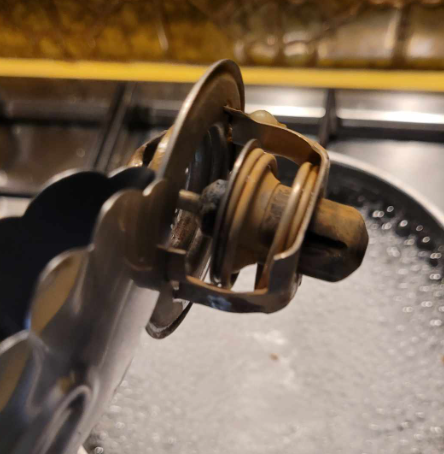
-
16 hours ago, Ecosse said:
Hi Malcolm,
It is a small world. The event would have been the Bo'ness Hillclimb Revival and I think I can recall chatting to you and your dad, although the specifics of the conversation elude me. I am unsure as to what colour scheme my 3 was at that time as it was around that time I changed the colour to white, it may have been the last outing of my metalllic grey period. How did the rebuild of the car go, is it still around.
I hope you can sort out your cooling issue, it never ceases to surprise me with what new issues TRs come up with when you think you have seen everything.
Regards, Cliff
Hi Cliff - yes - Bo'ness it was. September 2012 judging by the photos I took. Your car was exactly as in your profile shot. I remember really liking the contrast between white body and black grille. My Dad's car was 'finished' in late 2014, then transported over to Aus in 2016. The photo below is of her in her temporary home at Batemans Bay NSW... she is normally in Melbourne and is still with me, suffering through the same neglect as befell her when my Dad decided to procreate all those years ago. History does repeat I suppose... to some extent.
And yes - we never really finish learning, whether it's old cars or whatever else!
-
18 hours ago, Motorsport Mickey said:
So we need to diagnose and fix a problem that you don't currently have ? that's a tall order.
Stop trying to mend it until it breaks.
I think an airlock partially caused by your byepass blockage. Retorque the head, refer to how to undo and do up the nuts as posted previously above, order of undoing the head nuts as per diagram in you workshop manual, refer to your copy, and then use the same diagram to retorque the head up.
Then drive it until it stops.
Mick Richards
more like hypothesize on what may have caused the original leak... but yes, now that it seems to have disappeared, I'll just drive it until it happens again, or not, as the case may be. Based on it being something transient, I think maybe an airlock, or faulty pump as suggested by a few. Below is my Service Manual extract - 100-105lbs... sound about right? Is the undoing sequence the opposite of the tightening sequence (i.e. 10 to 1)?
16 hours ago, stuart said:You do only fill so you can just see the water at the very bottom of the rad neck I take it?
yep.
18 hours ago, Ecosse said:I had a similar occurrence about 40-years ago with my 3. The problem reoccurred a few weeks later, only on this occasion the problem persisted which meant a detailed search for the cause. Upon removal of the water pump I discovered that the impeller was loose on the drive shaft, but with a bit of jiggling the impeller could be made to 'catch' on the drive shaft so my assumption was that on the first occasion after becoming detached from the drive shaft the impeller somehow caught on the drive shaft thus restoring the water pump to working condition.
Last year I had a similar situation with my 7 in that the temperature gauge was showing the engine running very hot, but with no obvious leaks but requiring copious amounts of water to keep the system topped up, the cause was that the water pump had seized solid.
Cliff
Hi Cliff - you won't remember, but my father and I chatted to you back in the summer of 2012 at a Hill Climb event near the south end of the Forth Bridge... I forget the name. I still have some photos of your car from that event. My Dad and I were just about to embark on the rebuild of his car and I really fancied your car (and colour scheme). Interesting experiences you had with the water pump. Whatever was causing my overheating and coolant loss seems to have disappeared, but if it does come back, I may whip off the pump to have a look. Hopefully my clean and flush of the system will cure whatever it was. Thanks for the input!
-
On 3/5/2024 at 8:31 PM, Z320 said:
Hi Malcolm,
sorry me again because of my poor English, just to be clear:
you refilled 2 liters at all - or several times 2 liters?
Ciao, Marco
several times 2 litres.
the very strange thing now is that, since that journey where I lost so much coolant, I have been unable to detect any coolant loss whatsoever - the car appears to be running absolutely fine, sitting at the normal temp and no sign of any drips or losses anywhere. No sign of oil in water or vice versa, no exhaust smoke.
The night that I had the coolant loss, it was soaking the whole front of the engine bay, but because it was dark I could not see where it was coming from. I could be wrong, but I don't think it's a head gasket.
Very strange...
-
11 hours ago, Z320 said:
Hmmmm, my calculation is you topped up 2 liters at all.
First 0.5 liter, next in several stops for example 5 times 0.3 liter.
How do you notice the loss of 0.3 liter coolant while you drive a TR?
Hi Marco - I know that I topped up 2 litres several times over... I was pouring the water in using a two litre soft drink bottle!
I couldn't detect the water loss from the driver's seat... what I noticed was the temp gauge creeping up above where it normally sits: that was the red flag.
-
22 hours ago, Lebro said:
Correct adjustment is essential, the solenoid must be able to pull fully in to switch off the "pull in" coil. if it fails to do that the coil will burn out.
Bob
Hi Bob - yup, totally aware of that... and having just fitted a new solenoid without touching the clamp position of the actuating arm (i.e. not changed anything other than the solenoid), I can confirm that it is working exactly as it should. Ammeter on the car gives a big flick when the solenoid pulls in, but pretty much stays in it's original position.
For some reason, when I put an ammeter in the circuit to measure amps when engaging, there appears to be too many losses in the ammeter because the solenoid didn't have enough 'oomph' to pull in and sat on 7 amps for the split second it took me to read the value.
If I gave it a little 'help', it would pull in all the way and the current then drops to less than 1 amp when fully pulled in.
In both the engaged and disengaged state, the overdrive lever has some play in it (i.e. the solenoid plunger is not being restricted by the overdrive mechanism reaching its limits of travel.
All in all - I still think the adjustment is and was spot on... and I still can't explain why the overdrive would 'play up' only after the car was properly warmed up... then return to normal after cooling down... until of course it 'played up' permanently.
Anyway - I'll put it down to a faulty solenoid and keep watching that Ammeter like a hawk for the first 100 engagements or so

-
Geez you guys are good... or I'm not good enough

I obviously trust digital instruments too much... and don't know enough about 12v car batteries
So I checked the voltage with another meter and it was sitting at a nice and healthy 12.5 Volts without the engine on. Can't measure it with the engine running as she is currently 'dry'... but I don't expect any issues.
However... I'm still struggling to come up with a viable explanation for the overdrive solenoid failure and symptoms leading up to it. Anyway - I'll fit a new solenoid and see how she goes...
Thanks again!
-
On 3/2/2024 at 8:13 PM, ianc said:
I would be concerned at the **** which blocked both drain cocks and the bypass hose - and possibly the heater circuit. Suggests that the whole inside of the water system needs to be thoroughly cleaned, then filled with 25% antifreeze, changed every 2 years (or Evans Waterless, which doesn't need to be changed).
Hi Ian (and Ralph), I agree with the concern re crud... I'm honestly a little (or a lot!) ashamed that I let it get to that stage. Anyway - on checking the heater outlet valve I discovered that the little branch pipe that connects to the hose was blocked in a similar fashion to the bypass hose... now it is clear and I can blow down that pipe and out the radiator cap. I am waiting for a replacement bypass hose to arrive from Queensland and then will do a good clean of the cooling system before a coolant refresh.
On 3/2/2024 at 8:15 PM, Ralph Whitaker said:the heater circuit returns it`s water to the back of the pump, which would then send it through the by pass hose to circulate again, so a blocked by pass would certainly have a detrimental effect on the heater.
I thought that the flow through the bypass hose was from the thermostat housing back down to the pump, not from the pump to the housing... am I wrong? As above, the heater issues was likely caused by a blocked pipe downstream of the cylinder head valve.
-
On 3/2/2024 at 10:57 PM, Motorsport Mickey said:
"ohh and retorque the cylinder head if it has not been done since the engine was built."
I would do this even if the head has been retouqued, previously.
The head gaskets if copper tend to still compress over the years, and it's not unusual for a retorque to "gain" a little where the head gasket has relaxed. Ohh ...make sure you UNDO the head nuts by 1 flat first, to avoid stiction (sticking friction where the nut has stopped) compromising the retorque. don't be surprised after loosening the 1 flat if the nuts wind up by some amount more than where they started from.
Mick Richards
Hi Mick (and Peter) - being super lazy here, is there a good Idiots guide to the re-torque process that you can link me to? Thinking mainly about torque settings and order. It hasn't been done since the engine build... about 2,000 miles and 11 years ago.
-
Hi folks -
Today I finally got some time to poke around the old girl, mainly the cooling side of things (see other post), but I also took the tunnel off and started looking into the overdrive problems.
As described in a separate thread, the overdrive had started disengaging when the car got warmed up: it would work perfectly when the car was cold, then disengage once the car was warm. Eventually, though, on a long drive home (500 miles), the overdrive refused to engage, even when cold.
So - I have whipped the tunnel off and had a play around:
Overdrive works fine when operated manually: engagement is firm and the lever is not too stiff, based on my experience, whether operated on left or right sides.
Solenoid appears to be the culprit: when I removed it from the car and applied 12v to it, I found that the plunger was held in when I pushed it in, but the 'pull in' circuit was clearly not working. Now - having gone through one solenoid before, I got very careful about a) setting the solenoid up, and b) keeping an eye on the Ammeter, to make sure that whenever I flicked the switch, the large pull in current was not held for longer than a split second. I am convinced that it was operating fine, in this regard. I also fitted a 10A Fuse that re-sets after tripping, just to add some more protection.
Now - in poking around today, I found a previously un-known fault which may well have something to do with the issue: the battery is sitting at 15V with the engine turned off!
No doubt, I have an issue with the Alternator, which was fitted 10 years ago and done a couple of thousand miles since then. I have not had a chance to look into this side of things yet.
But - I am interested to know if this could be the cause of the overdrive solenoid failing. What I don't understand is why it would engage ok when engine cold, then disengage when hot. I also don't understand why it is just the pull in circuit that has failed, when it was the hold circuit that would have been running at excess Voltage for long periods of time.
Aside from the solenoid - would there be any other devices on the car that would not like 15V? It has petronic ignition, but based on the drive today, that doesn't seem to have been affected.
Regards
Malcolm
-
Hi guys - resurrecting a very old thread here: a sign of my time-poor stage of life. Thanks for your observations and suggestions so far.
Anyways - long story short, I dug into the cooling system today, partly to trouble shoot the coolant loss and non-working heater issues, partly to do a clean and flush of the system.
What I found:
- heater circuit confirmed to be clear and not blocked.
- drain at bottom of radiator didn't drain until I poked something into it... then it ran quite clear
- cylinder block drain similarly reluctant to drain, but a wire up the guts got it going. Seems odd that the valve is open when the handle is pointing away from the block... would have thought it should be the other way around?
- Most significantly: I removed the bypass hose and lo and behold, the restrictor thingo I put in there all those years ago with 5mm aperture was gummed up. It came clear with a few pokes of a screwdriver, but I had just taken the care for a spin around the block, so it was blocked securely enough to stop flow.After driving the car around the block and properly warming the engine, the bypass hose was cold (still blocked at this point) as were the hoses leading to / from the heater core (especially the one on the UK passenger side - stone cold). Obviously no heat coming from the heater.
Also - as before, no sign of any coolant leaks, anywhere. The car ran up to temperature, the fan cut in and turned off as usual. I noticed that the temp gauge immediately dropped after the car was started 'hot'... which I take as a sign that the thermostat was open.
Unfortunately, the bypass hose was cracked, so I was unable to complete my flush and replenish work and then re-test the system to see if things were back to normal (i.e. all hoses warm, heater producing heat).
SOOO..... the question for the collective: would a blocked bypass hose impact on flow through the heater circuit? Would it lead to coolant loss when running at steady high engine rpm (say 3000)? Would it cause any damage to the engine on its own? Note that the engine seems fine - starts relatively easily, no obvious sign of distress anywhere (smoke or sounds, and the temp indicator thingo on the back of the block still shows that it hasn't got 'too' hot.
A quick Google search suggests that the blocked hose should not have been too much of an issue, if any issue at all... but I am desperate for it to be the source of my coolant loss / defunct heater issues. Perhaps the heater issue is instead due to a clogged internal passage, given the drains were reluctant to run until I gave them a 'poke'?
As always - your thoughts appreciated!
-
Hi guys
Looking for some advice regarding a cooling system issue, which I haven't had a chance to investigate yet.
I drove the TR back from NSW to VIctoria the other day (500 mile trip) and ended up limping home with 2 litre coolant top-ups required every 30 miles or so for the last 100 miles.
First issue I noticed was needing to top up approx 500ml of coolant after the first 100 miles... then the heater went stone cold... then the temp guage started creeping up above its usual position at just below 185. When this happened, I stopped to check coolant level and that was when I started the regular top ups to get home.
Bear in mind the ambient temp was less than 10 deg C (pretty chilly!) and I was cruising at 55mph, albeit without overdrive (that's another story!). The gauge never got above the mark between 185 and 230 (not sure what that actually equates to?).
I don't think the engine overheated at any point. It was running fine throughout, and the temp check thingo on the cylinder head looks to confirm that it hasn't got to more than 99 degC.
I'm wondering if it might just be that the radiator cap has failed - I can't see any obvious sign of leaking from hoses etc, and no sign of water in the oil or out the back. The overflow tube was also noticeably hot and there were signs of coolant coming from that cap area (wasn't sure if that was from my re-filling though).
Would a failing radiator cap reduce the pressure in the system such that flow through the heater would be cut off?
Thanks in advance!
PS - photos show the start of the journey which was very lucky... for once the boys in blue gave me a slap on the wrist instead of a hefty fine!
-
Hi guys and gals
Sorry for posting a 'sale' ad here, but I wanted to draw your attention to a post in the For Sale forum which I have just posted - all items are free to a good home (I am clearing my late father's garage) and collection is required before I fly back to Australia on 17 Oct.
I hope I can find a home for the parts rather than taking them to the tip.
Thank you -
Malcolm Glover
01241 870 000
bigmalcy@hotmail.com -
Hello all
I have a selection of pieces left over from the re-build of my late father's TR3a. I am now clearing out his house and would like to find a home for the parts, rather than disposing of them.
I do not want anything for them so they are free to a good home, but whoever takes them may consider making a donation to a worthy charity for whatever they think is a reasonable amount.
The photos tell the story.
Given how busy I am with clearing the house, I will not be able to arrange postage: collection only from Arbroath, Angus. Preference given to someone who will take all.
I am flying back to Australia on 17 October so collection required before then, ideally.
Thank you!
Malcolm
bigmalcy@hotmail.com
01241 870 000 -
Hi Rod
All good - adjusting the lever position on the shaft to give the solenoid plunger a bit more slack at the 'off' position has done the trick. The o/d worked perfectly and actually engaged with just the right amount of urgency. Back to using a 10Amp fuse on the power supply, too, so the solenoid should be protected if it ever gets stuck in the 'pull in' phase.
The Vanguard box and overdrive that I picked up for 250 pounds is almost identical to TR2 / TR3 units: the gearbox part is identical other than the clutch lever and selector cover etc. The overdrive is externally identical except for the solenoid mounting plate. It was easy to just swap the TR units over to remedy these issues.
Internally, the overdrive is identical to early TR2 overdrives, except it is a 28% reduction rather than 22% used on the TRs. Makes for slightly more relaxed cruising.
Anyway - will put the inside of the car back together and then see how she goes over the next few drives.
Thanks for your input!
-
Hi Rod
It's actually a Vanguard box which I bought as a semi-temporary stand in for the original box that lost first gear. It hasn't been rebuilt to my knowledge.
The vanguard box worked well for a short period of time (two or three drives) before starting to blow fuses on the power supply to the solenoid.
I am now using a new solenoid. Nice snappy pull in when car is not moving. Have swapped over all the actuating valve components except the top cap and the little plunger that bears on the top of the ball. No difference to symptoms, other than the lighter feel on the lever when car is stopped - this was due to the installed spring being too heavy.
I have re-adjusted the clamp so that the solenoid plunger has more room to build up momentum before it starts lifting the mechanism... this might allow it to overcome the initial resistance and pull in properly. Still doesn't sound quite right and may just be a way of getting around another problem. Will test that tomorrow and see how it goes.
I have measured the ball and it is 5/16" dia which is correct, I believe. Later models used 1/4" dia balls, which would reduce the force on the ball by a factor of 36% or so. The only thing about that is that I am not sure if the smaller ball with less force would seal properly on the top of the plunger and on the casing when the o/d is turned off.
-
Grrrrrrr
Getting really tired of this now. Took the car for a road test just now and the overdrive operation STILL is not working properly.
Works fine in he garage, then not when out on the road. What I realised during this test drive, though, is that when the car is in motion, the oil pressure pushing down on the ball bearing is creating a sticking point in the lever action: the lever is light when the car is not moving, but when the car is moving the lever is stiff and requires a solid nudge to get it moving at first.
Flicking the switch to acuate the solenoid when the car is moving results in the solenoid twitching, but it is clearly unable to overcome the additional force of the oil pressure on top of the ball bearing. Flicking the switch while the car is stopped results in the solenoid operating perfectly.
The oil pressure in the o/d is approx. 350psi, which I think is reasonable, although I did put a washer in front of the accumulator spring to increase it a little. I don't think this would be causing the issues, though.
I'm reaching the stage where I think I might just re-fit the original box and overdrive which has now been repaired... unless someone can suggest what could be causing this sticky valve.
-
Hi guys - so I've finally (I HOPE!) got to the bottom of my stiff overdrive actuating lever and the resultant issues with solenoids.
I compared the spring in the actuating valve from the recently acquired overdrive with the spring from the original overdrive and to my relief, there is a clear difference between the two.
HOWEVER! As hinted at by Rod, I also discovered that I was not helping the situation by being too cute with the gasket I cut for the solenoid mounting plate: it was too tight around the actuating shaft, resulting in the action stiffening up to the point that the lighter spring would not return it to the "off" position, but only once the solenoid plate was bolted tight against the mating face. Who knows, maybe in the past, this happened to the previous owner of this box and they decided to put in a heavier spring to overcome the friction.
Either way, a quick trim of the gasket, and now I have a much lighter actuating mechanism, and everything is back together awaiting a test drive. Fingers and toes crossed... getting a little tired of taking this thing apart and putting it back together, although it has been a good learning experience.
Thanks for the input! Photo below is of the heavy spring and what I presume is the correct spring... the heavier spring is also much shorter than the lighter spring.
-
Hi guys - with the spring and plunger etc removed, the lever operation is similar in weight to my other overdrive unit, possibly even a little less heavy, so I don't think the seals are the root cause.
Interestingly, when I purchased the overdrive and tested it with the seller, we discovered that the actuating piston thingo (with the tiny hole for oil pressure release) was bent... no idea how this would happen, but it also points to something being not quite right in this area.
Also - that o/d info sheet posted by Rod seems to confirm that the spring I have installed is a heavier wire than shown elsewhere... the pitch of my spring is approx. equal to the thickness of the wire, whereas the others use much thinner wire, see one example below.
I am going to have a crack at getting my other overdrive actuating valve removed so I can see what is in there... I might even swap the components over to see what happens.
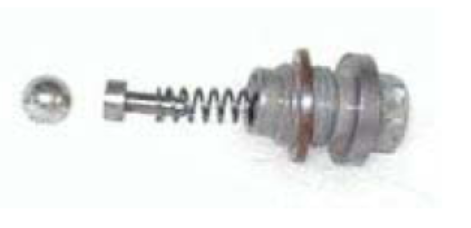
-
Hi guys and gals
My overdrive investigation continues. The new solenoid has certainly helped with the blowing of fuses, but I can't help but feel that there is something with this 2nd hand o/d that is the root cause of the solenoid problems. Even on today's test drive, on a couple of occasions the solenoid twitched as if it was trying to pull in, but did not actually lift the lever. Fortunately I was being very careful to monitor this and turned off the overdrive within a second or so. 99% of the times I flicked the switch, though, the o/d engaged as it should.
What I have noticed is that the actuating mechanism on the overdrive is very much stiffer than the mechanism on the original overdrive that is now out of the car. The original overdrive actuating mechanism is comparatively light to the touch, while still returning to the off position in a positive manner. The o/d box that is now in the car is very much more stiff to operate, requiring much more pressure on the lever when engaging manually.
I have removed the valve and spring / plunger / ball etc and notice that the spring is very, very stiff. It is 11/16" in length. I have been unable to remove the same items from the original box, because the top bolt is so tight I think I need to get an impact wrench on it (something I am yet to acquire). However, I am almost certain that the spring in the original o/d must be significantly less stiff, otherwise the operation would not be so light. I have compared the spring with the springs found in the synchro hubs: the synchro hub springs are shorter and thicker wire, but I would estimate the compressive effort is similar between the two.
Can anyone comment? Below is a photo of the spring with other components. It looks heavier than the spring shown in a o/d guide I downloaded from the interweb (also inserted below), but that could be a trick of the photo.
My spring etc:
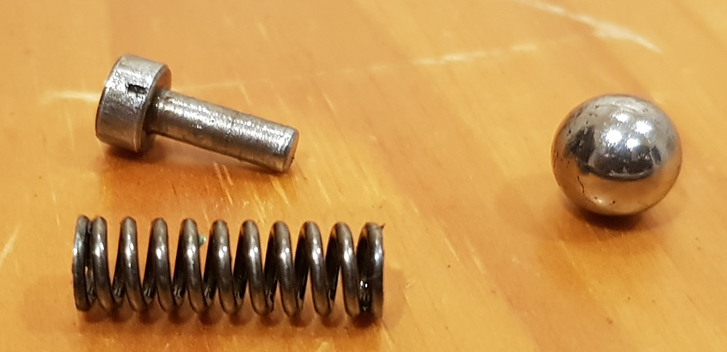
Spring shown on Green County Triumphs guide to overdrives:
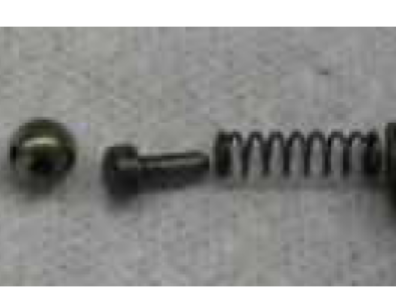
Thanks!
-
Hi Ian - don't worry, I read and understood your post... I thought that my old solenoid with resistance of 0.6ohms was close enough to your figure of 0.8 ohms.
I also thought at that stage that when a solenoid failed, it would fail to the extent that the pull in function wouldn't work at all. Mine seems to have failed such that the pull in circuit resistance has been significantly reduced, but the pull in still seems to work, but not reliably, and will sometimes draw 30+ Amps with no pull-in action.
I'm also not sure if the solenoid issues are just due to an internal fault, or my own error in setting the position of the actuating lever. Time will tell!



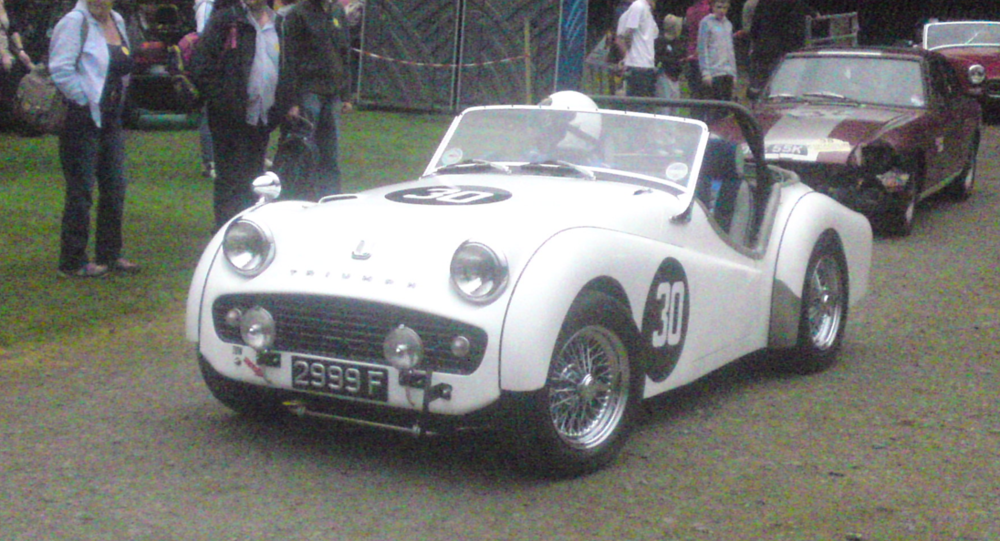
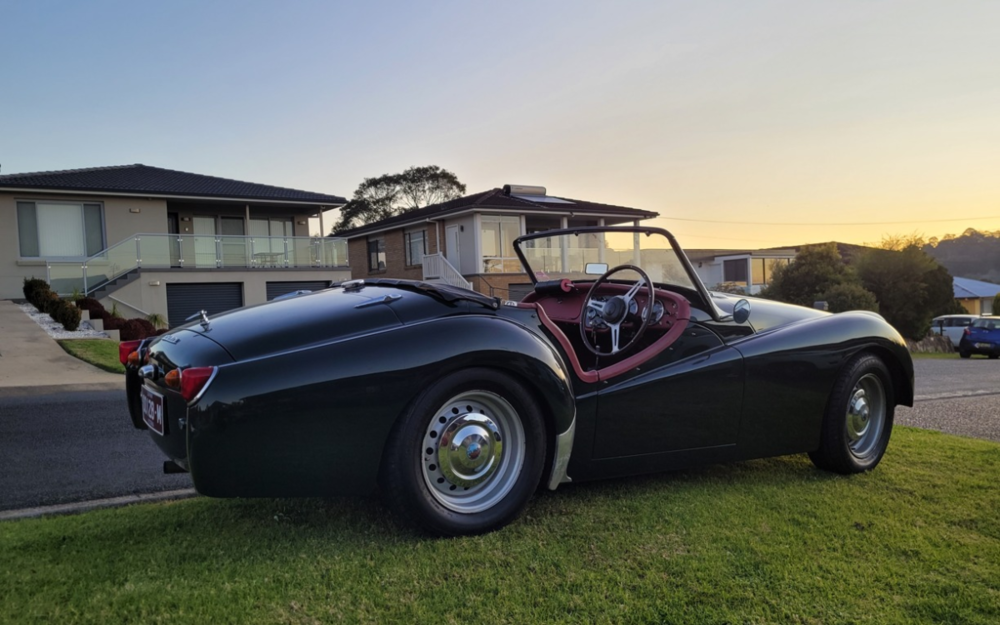
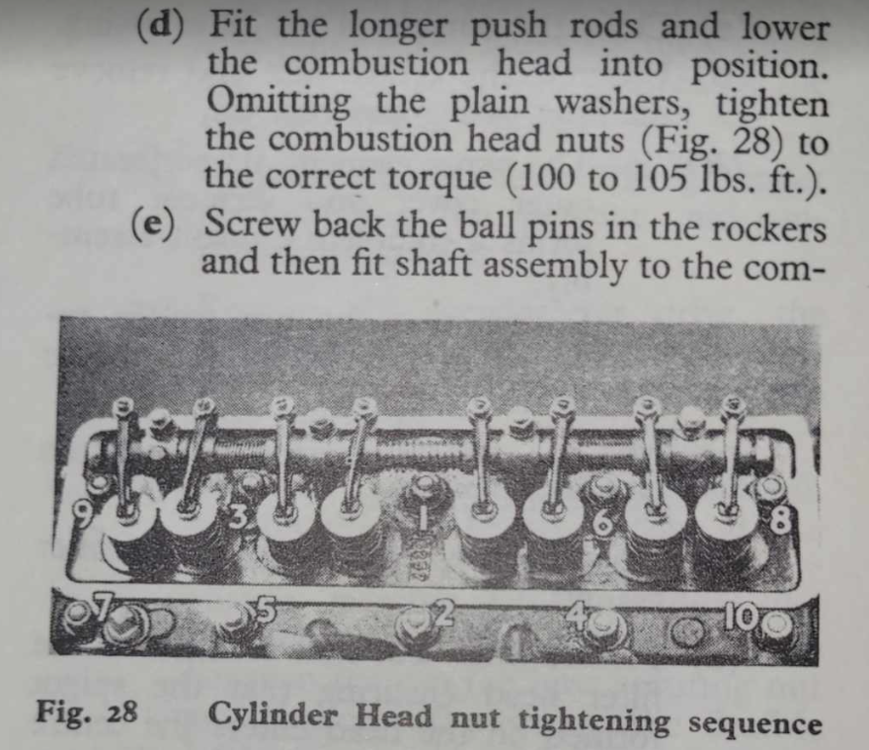
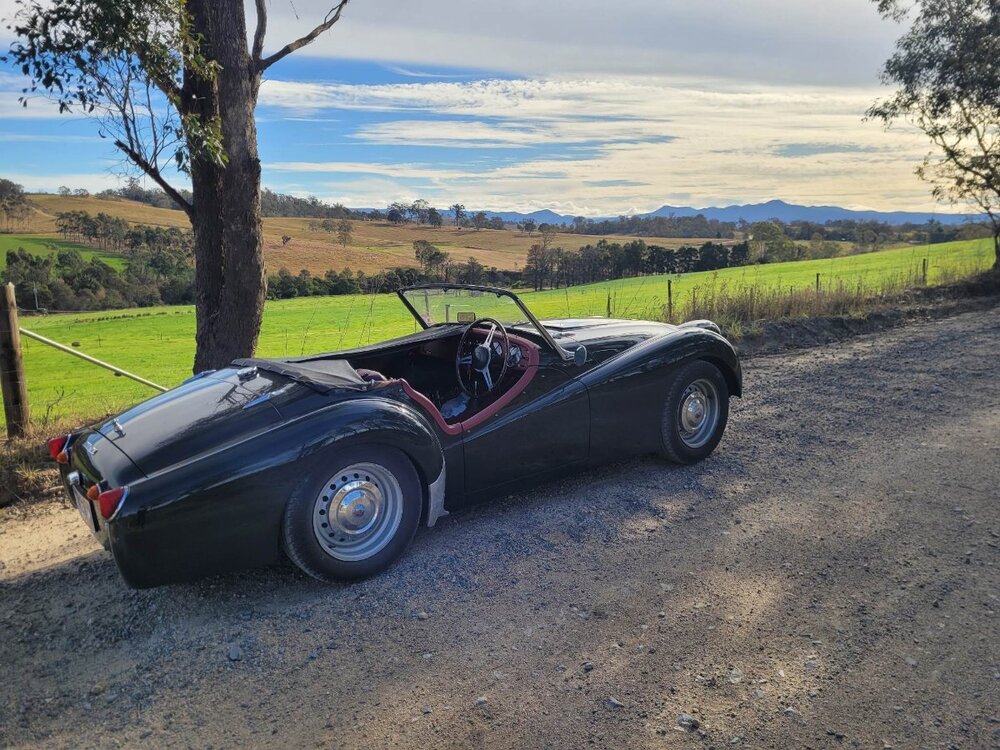
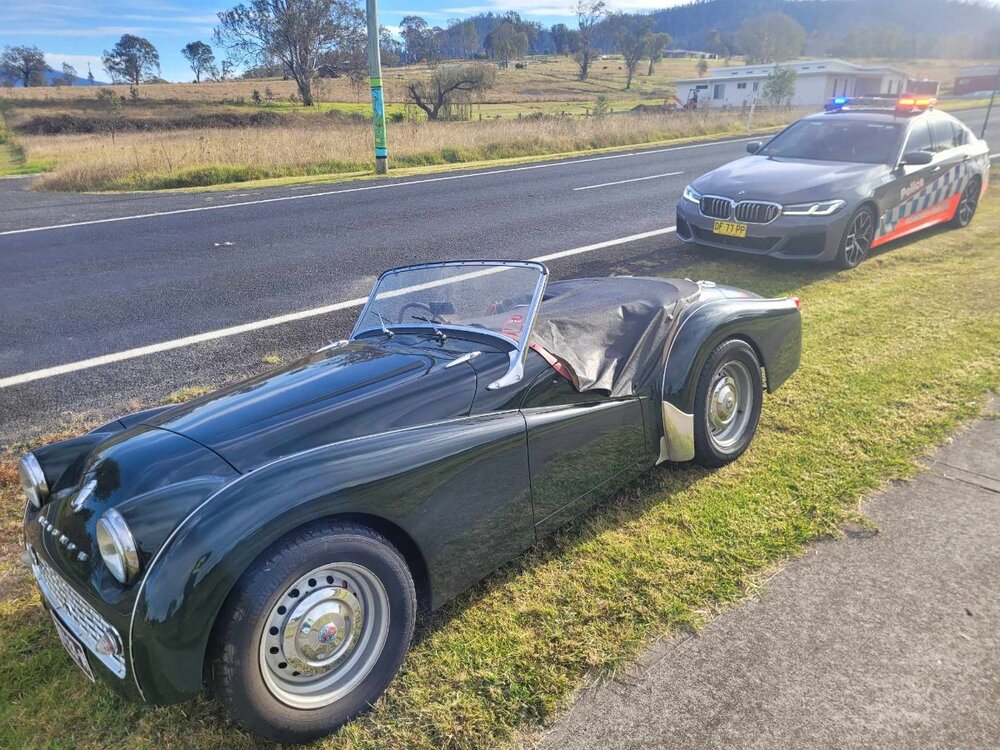

Thermostat Opening
in TR2/3/3A/3B Forum
Posted
Hi John - good idea, and yes I do have one of those guns. Have you done this yourself?